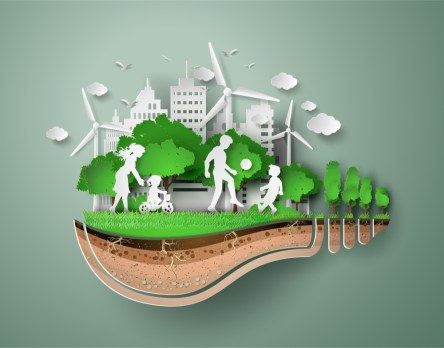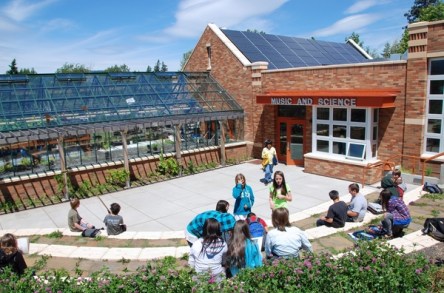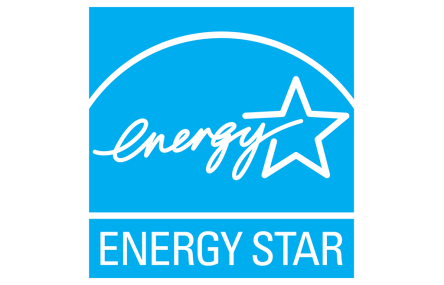The recently released UN Intergovernmental Panel on Climate Change report shocked everyone who was paying attention. In short, attempting to mitigate temperature rises to 1.5 percent by 2050 (which already seemed impossible to most) is too little too late. The globe is on a trajectory to see temperatures rise more than 3 percent by that time. The resulting flooding, droughts and superstorms will be catastrophic. A drastic shift in energy sourcing and usage is necessary to limit economic and humanitarian costs. Fortunately, drastic doesn’t mean impossible. Microgrids and carbon dioxide recycling are two available solutions that can make substantial impact. Microgrids Microgrids enable centralized power generation, storage and delivery. They offer more efficient power transmission, reduce costs for consumers, and decrease the duration of blackouts which can save lives and protect economies. A microgrid can “cut air pollution from the electric utility sector as much as 30 percent by 2030, saving 34,000 deaths a year,” states Smart Energy Consumer Collaborative. The systems offer more immediate benefits as well. Hurricanes Florence and Michael, for example, resulted in nearly $100 billion in property damages. After factoring in electricity outages and stalled commerce, Accenture estimates that such storms can cost economies $150 billion per year. The implementation of microgrids would reduce the economic impact of natural disasters by quickly restoring power. Microgrids also facilitate the integration of renewable energy sources with flexible scalability. Local organizations do not need to wait on utility companies or governments to implement more sustainable practices. Solar panels, roof-mounted wind turbines, and other sustainable energy devices can be used as the primary energy source on individual projects. Several power companies are exploring the power, efficiency and reliability of microgrids. Edison International, Central Hudson Gas & Electric, Duke Energy, San Diego Gas & Electric are just...
Zeroing In
On Energy Neutral Buildings
It was a different era in 1997, when Portland, Ore.-based New Buildings Institute, a nonprofit organization that promotes energy performance improvements in commercial buildings, was founded. LEED and ENERGY STAR® buildings, Living Buildings, market adoption of renewable energy to any measurable degree—all were yet to come. “Reducing energy use was almost exclusively driven by utility efficiency programs focusing largely on fluorescent lighting upgrades,” NBI reflected recently. Today, At least 50% of customers have the option to purchase renewable electricity directly from their power supplier according to the U.S. Department of Energy. Energy conservation has become considerably more sophisticated in a report NBI recently released to coincide with the organization’s 20th anniversary. While still small in relation to total buildings and floor space, zero building development in the U.S. is accelerating, according to the report. Zero energy buildings—defined by the U.S. Department of Energy as a property or community where “on a source energy basis, the actual annual delivered energy is less than or equal to the on-site renewable exported energy”—are gaining favor across virtually all property types. The recent NBI report, “Getting to Zero Status Update and List of Zero Energy Projects,” highlights nearly 500 zero energy commercial building projects across the U.S. Projects owned by for-profit companies account for 26% of the list. Privately held buildings account for 46% of zero energy buildings, with K-12 schools representing 18%. By contrast, NBI’s first Getting to Zero Status Update in 2012 reported just 60 commercial and multifamily buildings or projects that were either verified as zero energy or approaching that level. Zero energy buildings had the potential to grow in popularity, Greg Zimmerman, executive editor of FacilitiesNet, said in 2010, because they are “the embodiment of sustainability because net-zero is a model that is self-contained—no...
Tenant Power
Awards for Smart Energy Use
The U.S. Environmental Protection Agency’s ENERGY STAR program has helped business owners and individuals save money and protect the environment through energy efficiency since 1992. Now there’s a new dimension to the program. In the fall of 2017, EPA launched the ENERGY STAR Tenant Space pilot program to promote energy efficiency in commercial tenant spaces. EPA recently recognized 48 office tenants that demonstrated commitment to energy efficiency and environmental stewardship. The award recipients met five energy efficiency criteria during the 10-month Tenant Space pilot program: estimate energy use, meter energy use, light efficiently, use efficient equipment and share data. Recipients of 2018 ENERGY STAR Charter Tenant Space Awards include Forest City Realty Trust Inc., Kilroy Realty Corp., LinkedIn and Shorenstein Realty Services LP. Some organizations, such as Cushman & Wakefield, Harvard Pilgrim Health Care, JLL and JPMorgan Chase, earned recognition for multiple locations. “Adhering to sustainable best practices not only enhances our bottom line, but it also highlights our broader efforts to consistently act as a responsible corporate citizen,” Jason Kern, CEO for LaSalle Americas, said in a statement in June following the designation of LaSalle’s corporate headquarters in Chicago as a Charter Tenant Space Award recipient. Along with verifying its electricity meters, LaSalle estimated the office’s energy consumption using an online tool developed by EPA with analytical support from the U.S. Department of Energy. The company documented its nearly 100% LED lighting fixtures, daylighting/occupancy sensors and nearly 100% ENERGY STAR certified equipment and appliances. LaSalle also established an ENERGY STAR Portfolio Manager account to measure energy and water consumption. The voluntary Tenant Space program was created by the Energy Efficiency Improvement Act of 2015, which encourages owners and tenants to implement high-performance energy efficiency measures in commercial buildings. EPA continues to analyze the...



